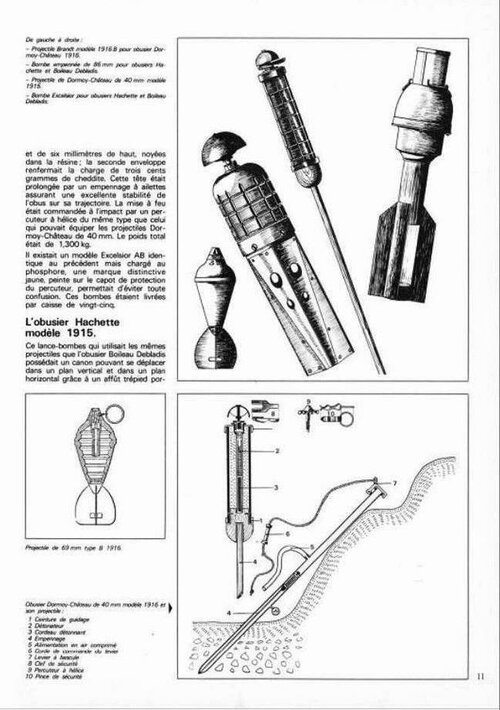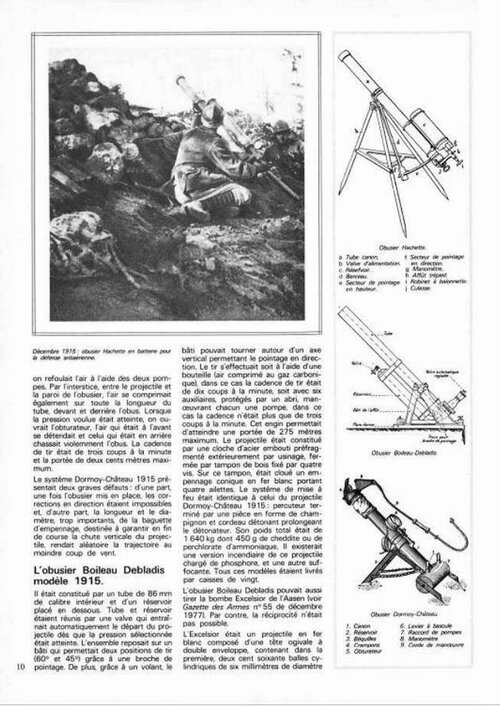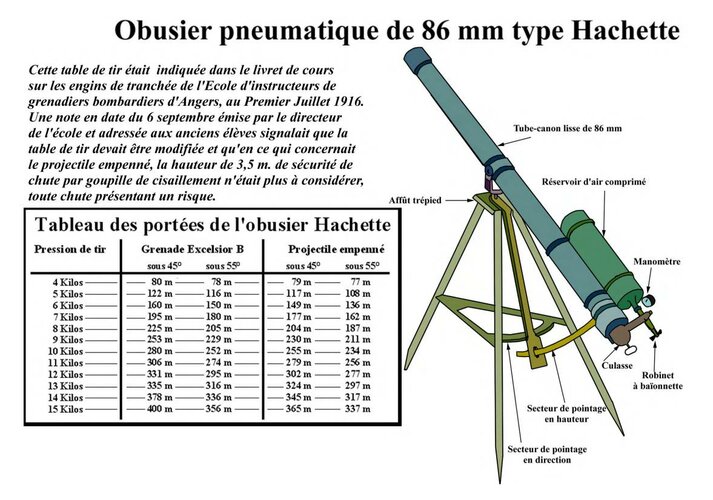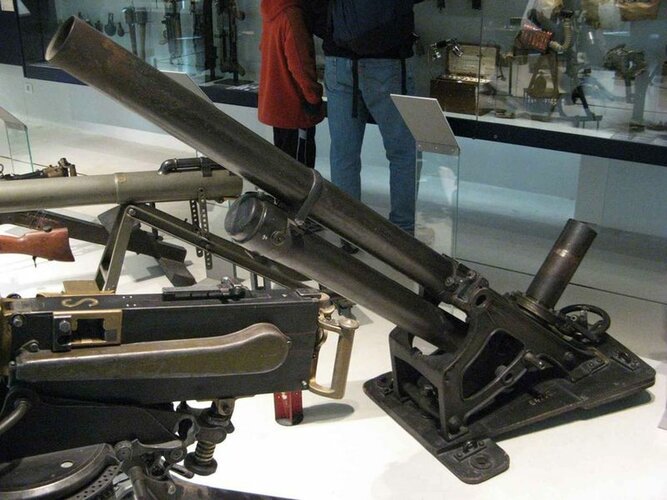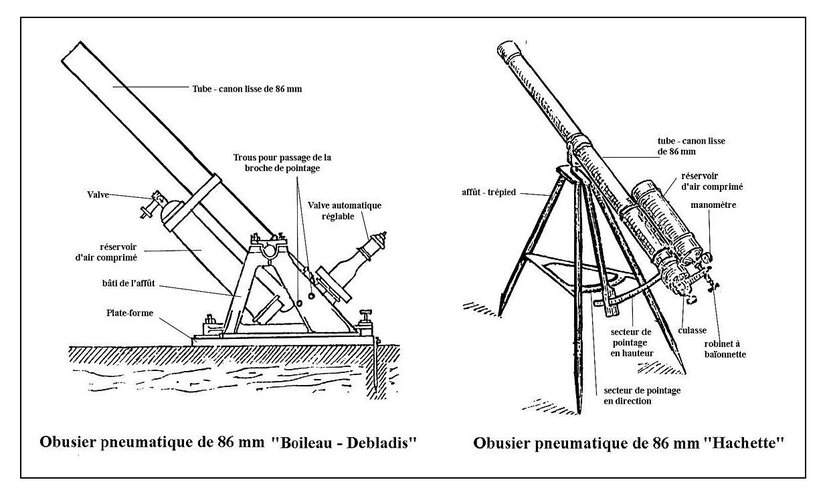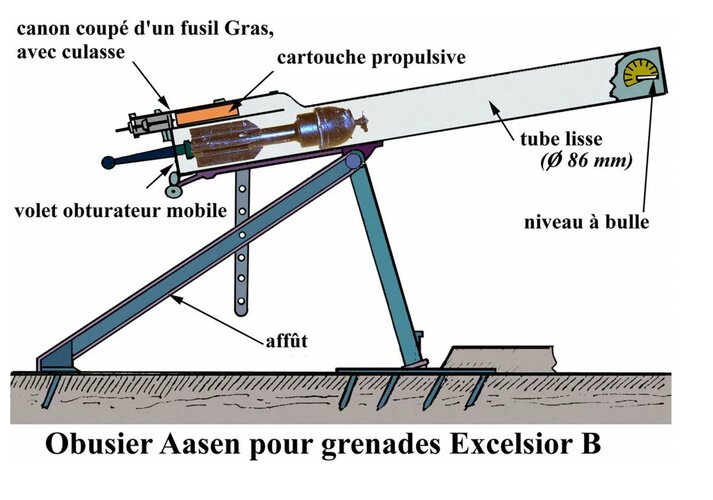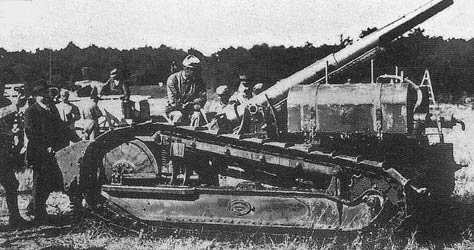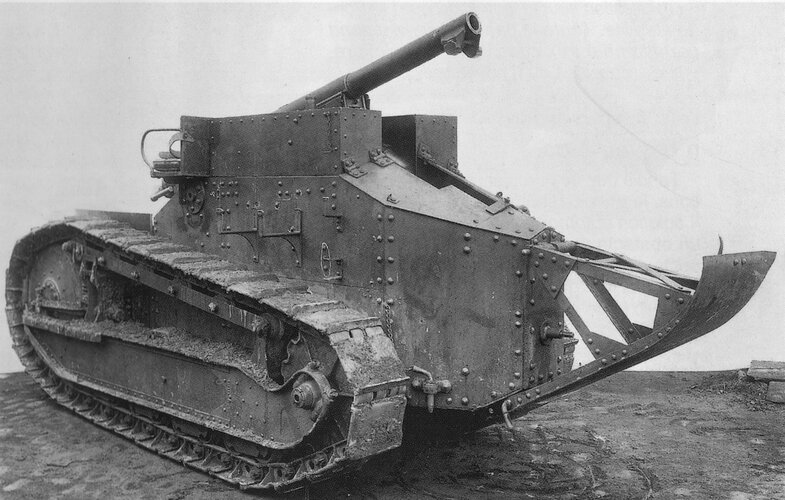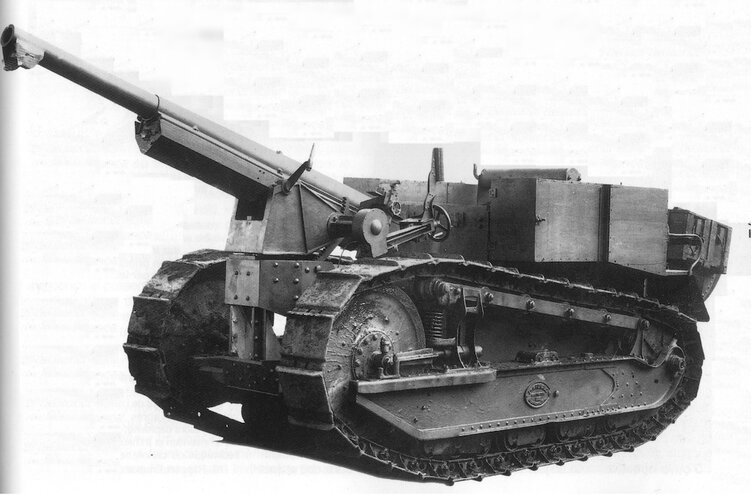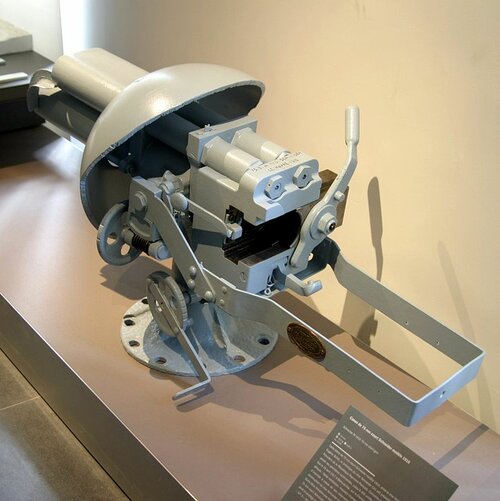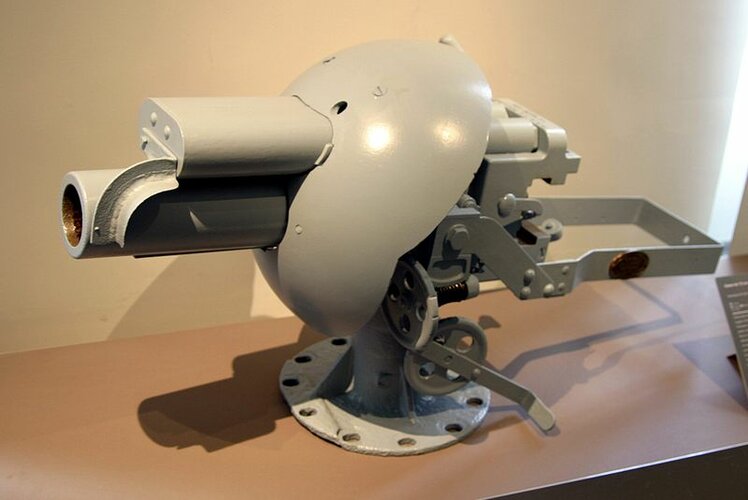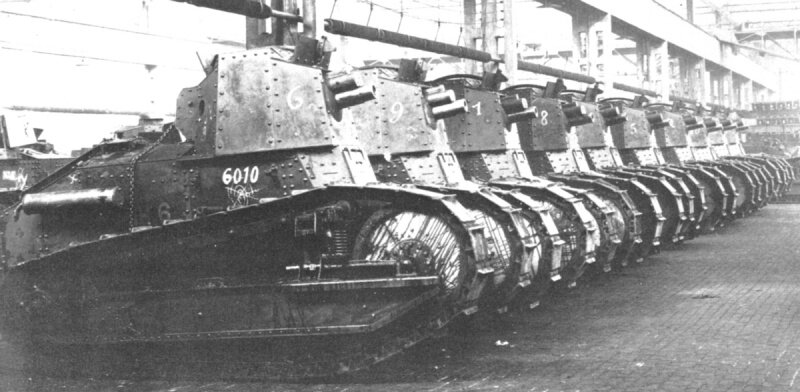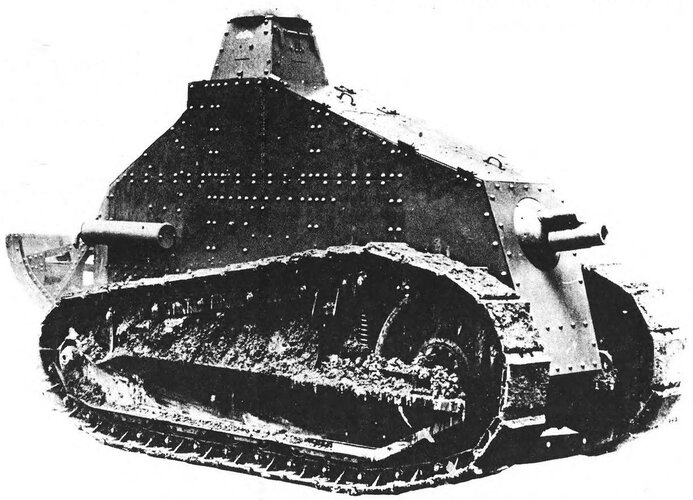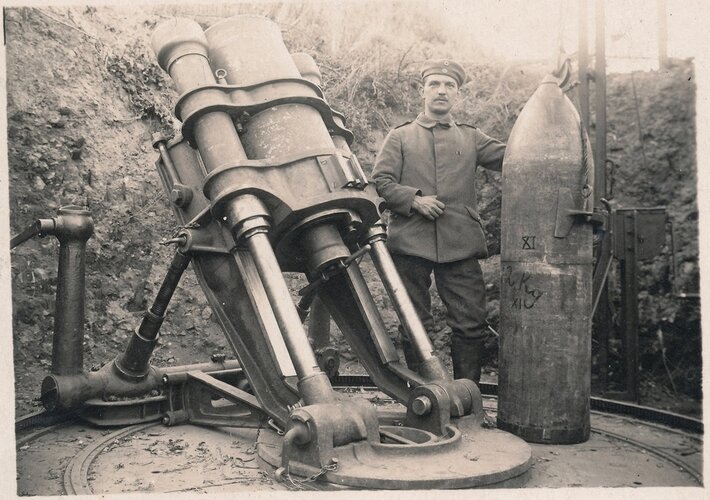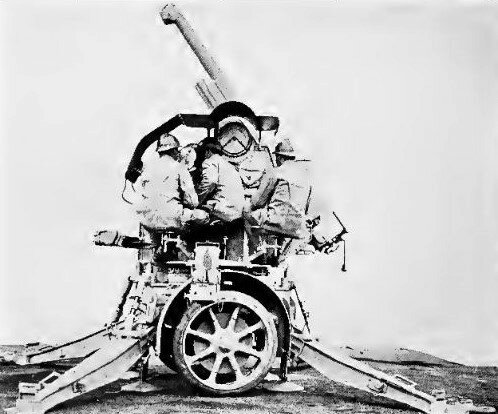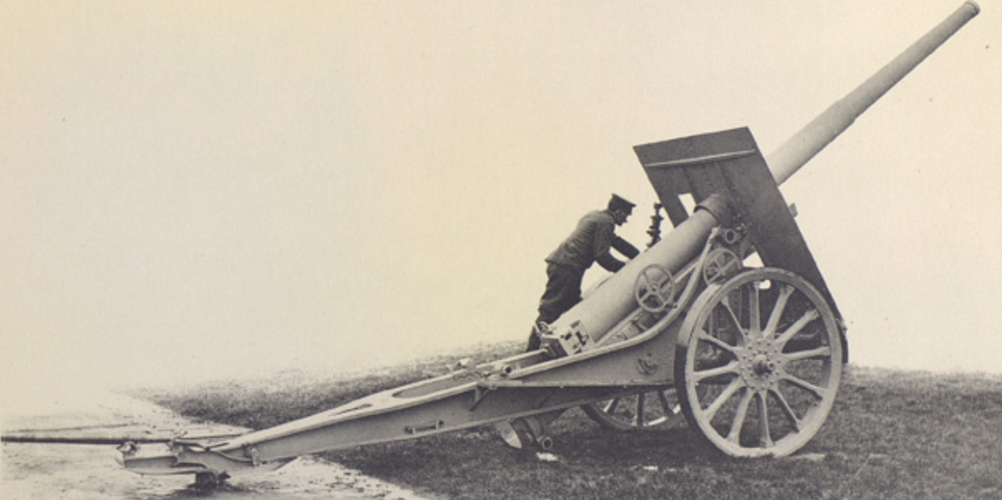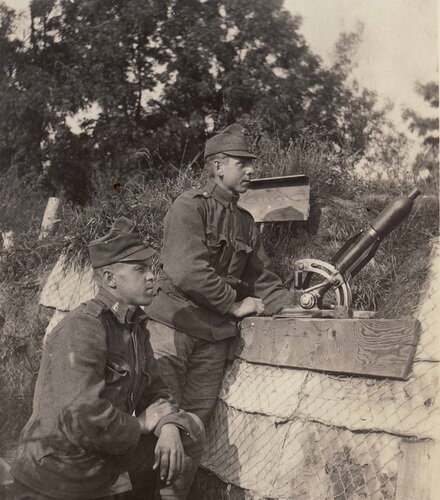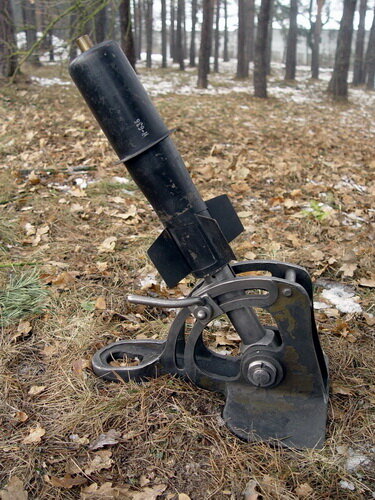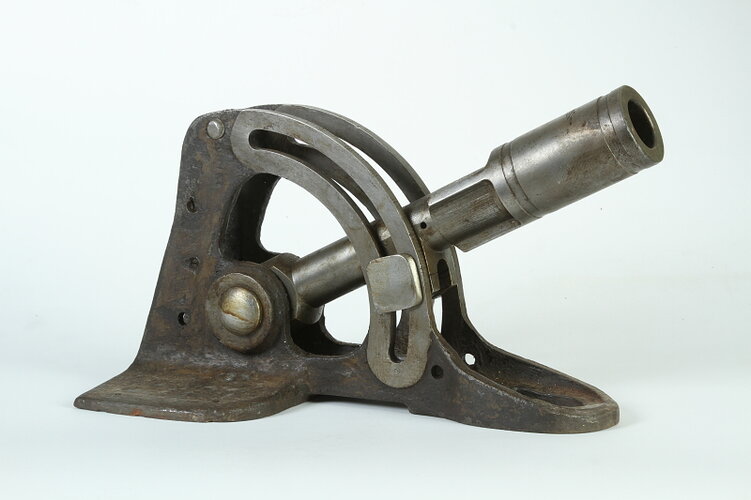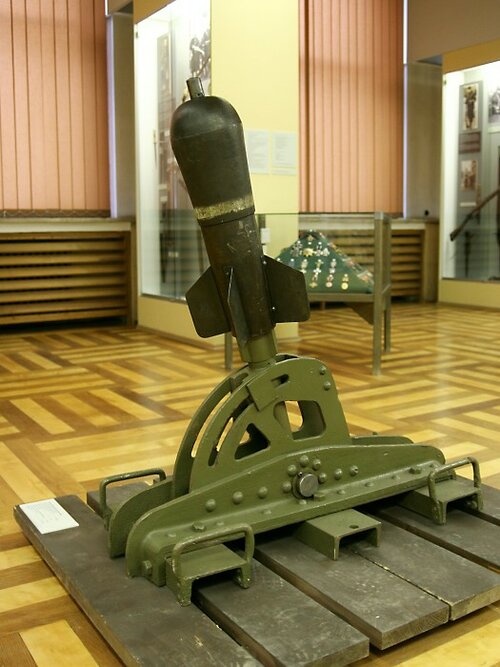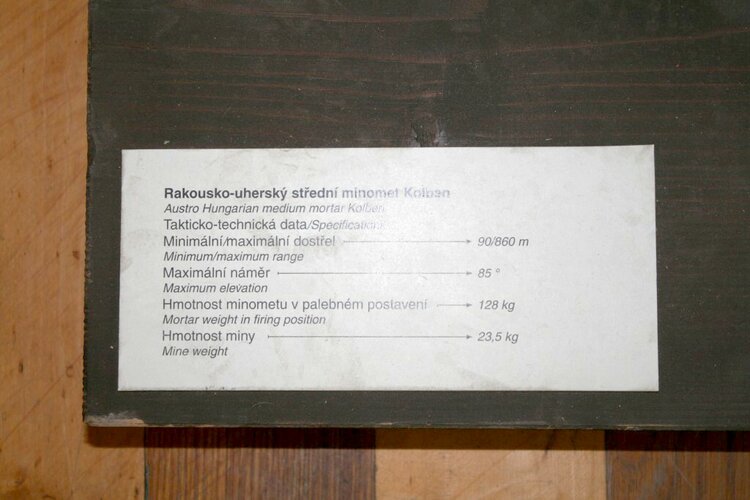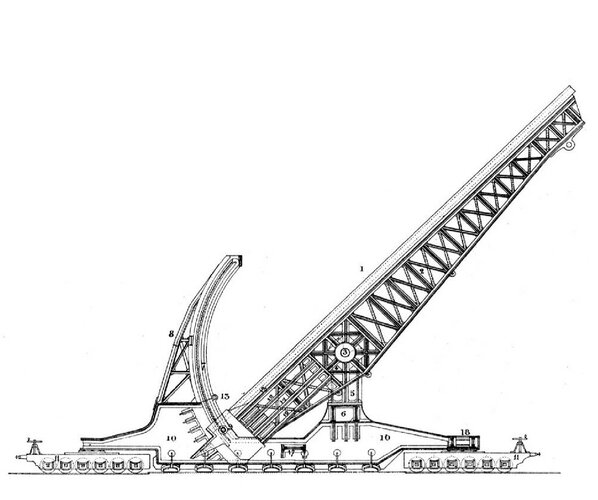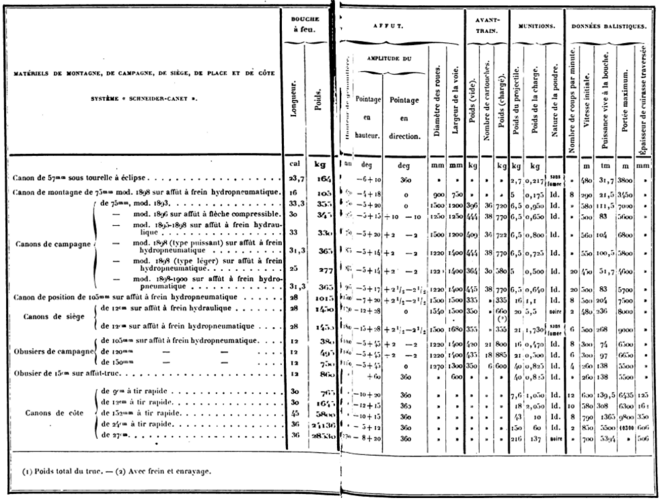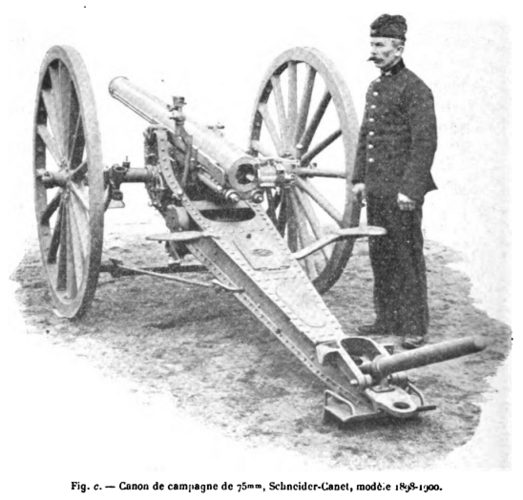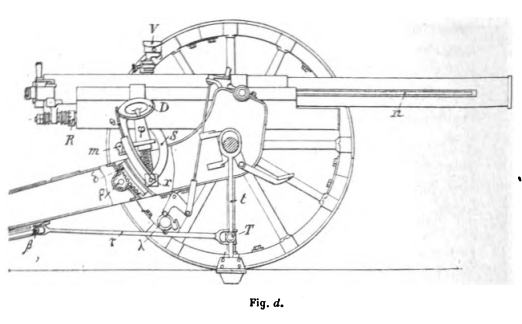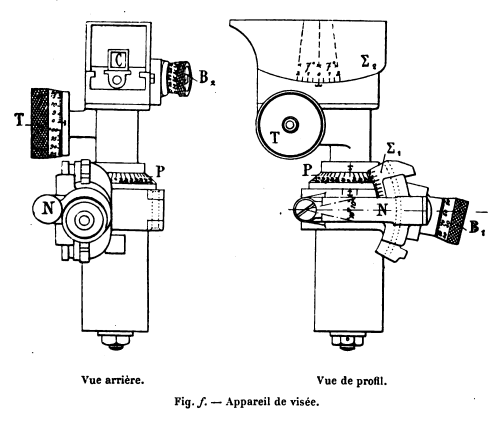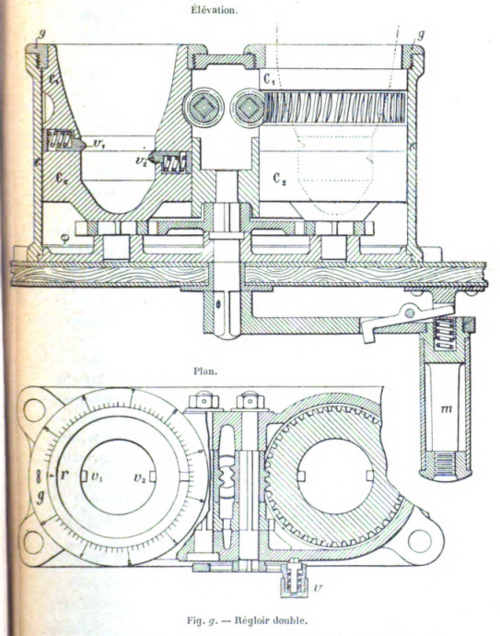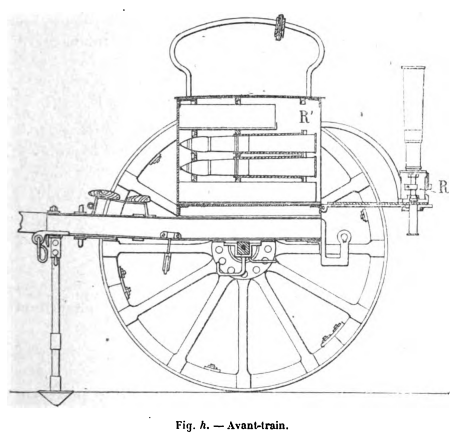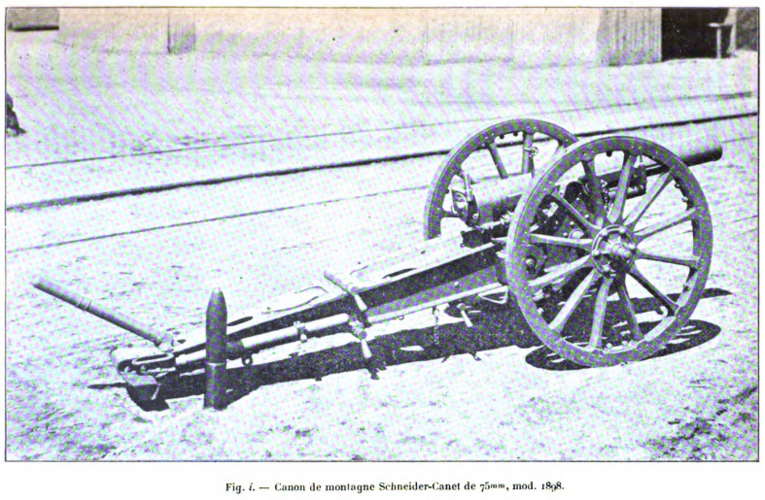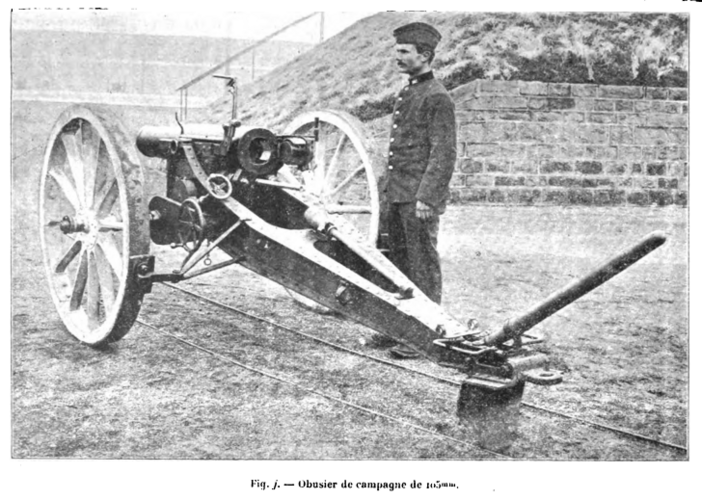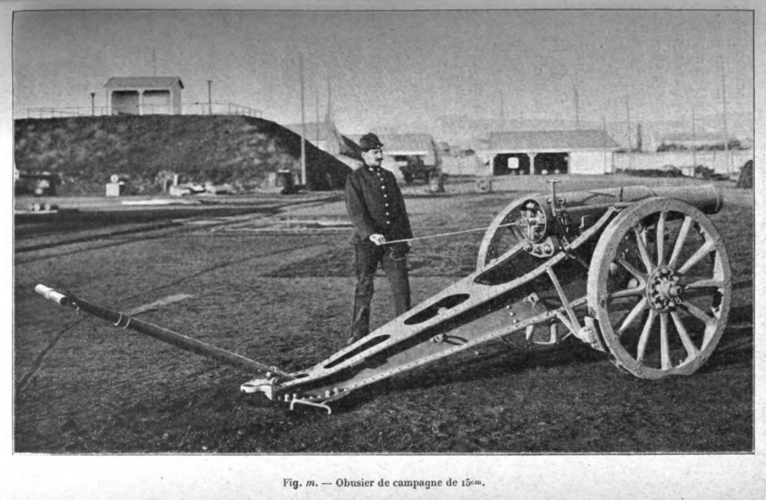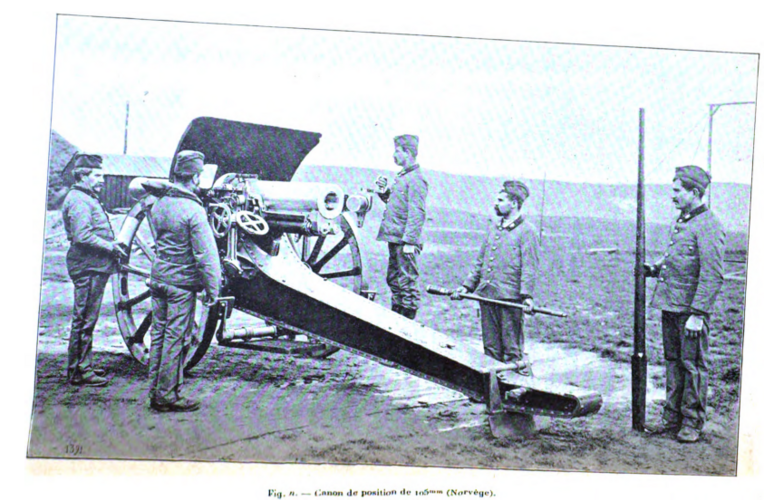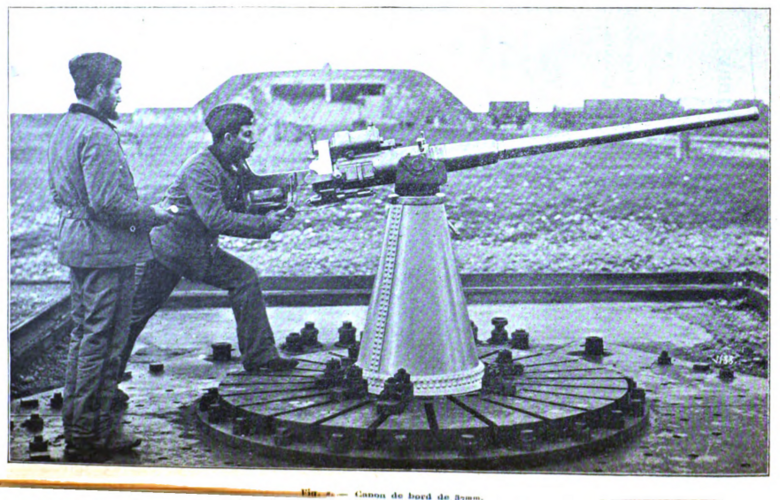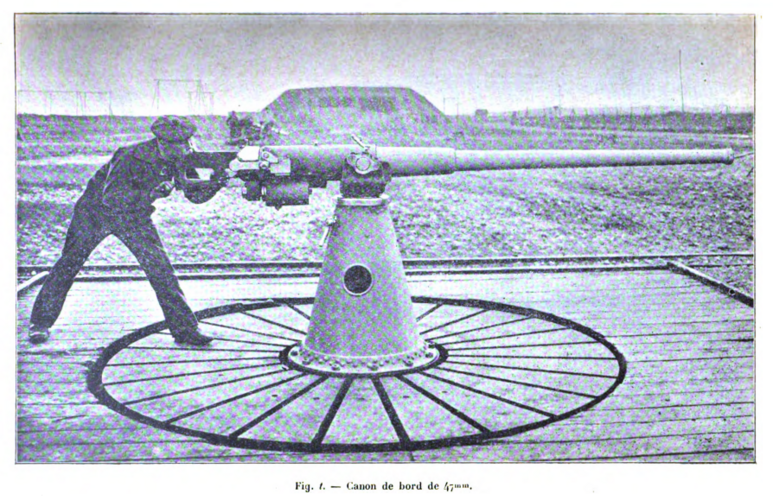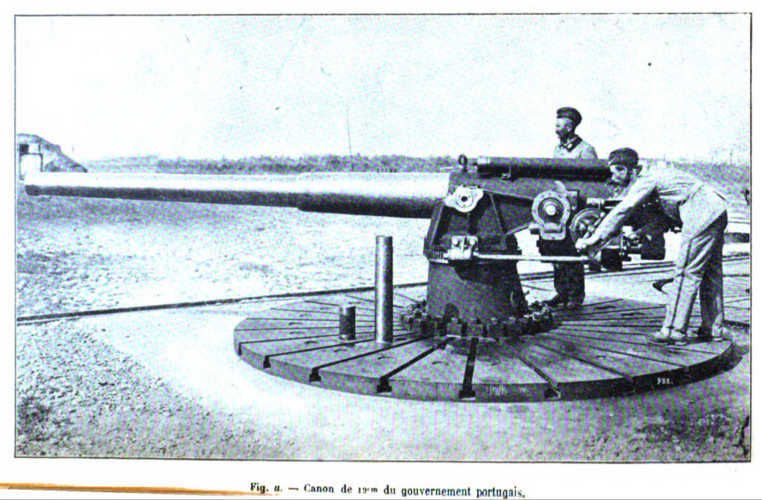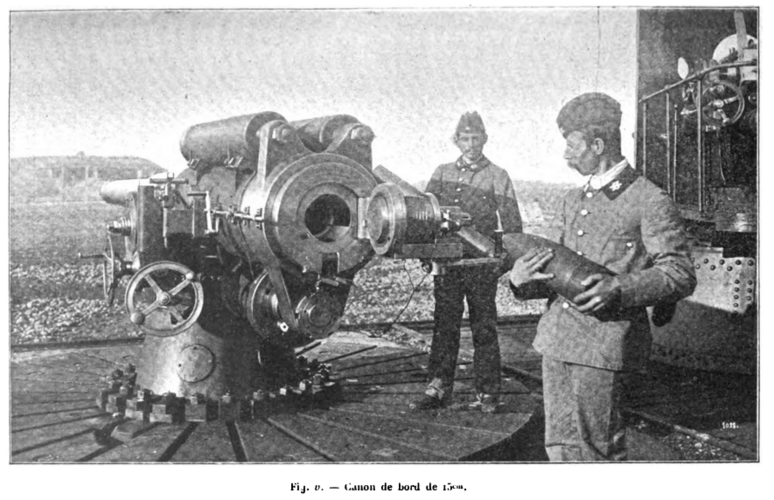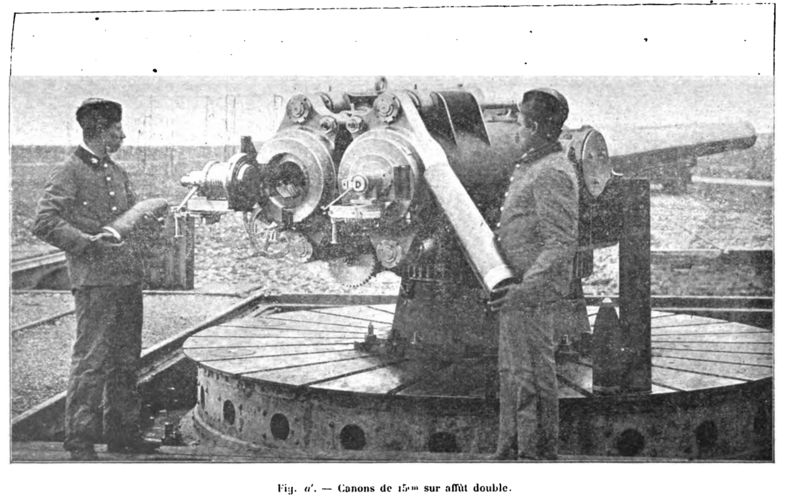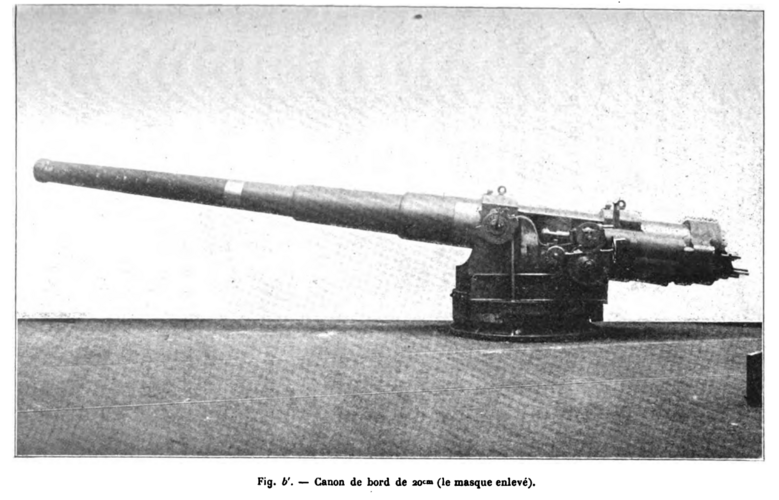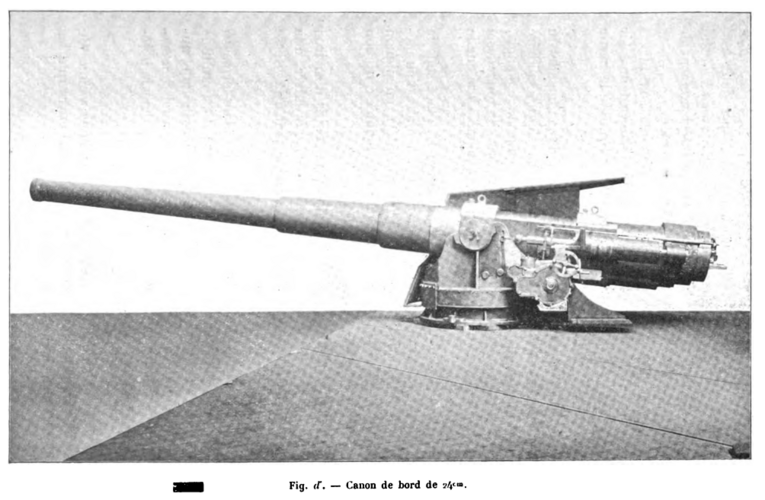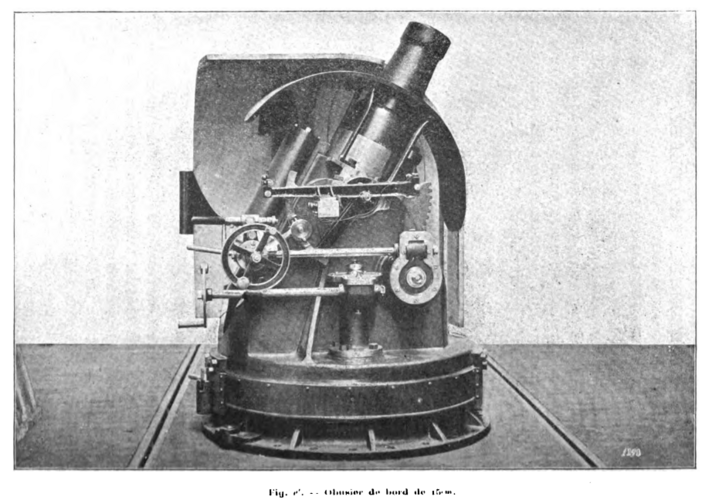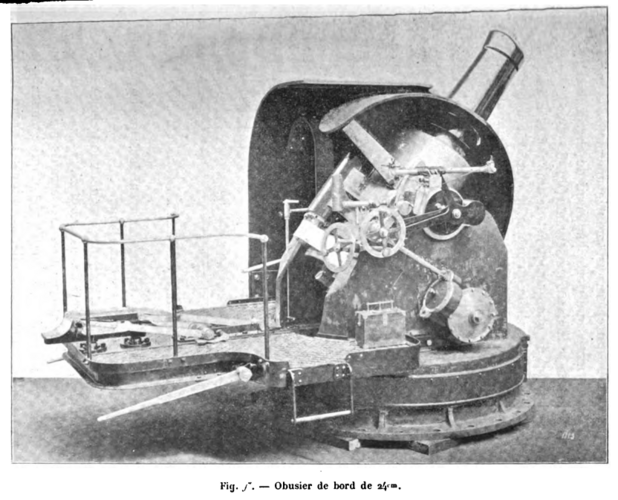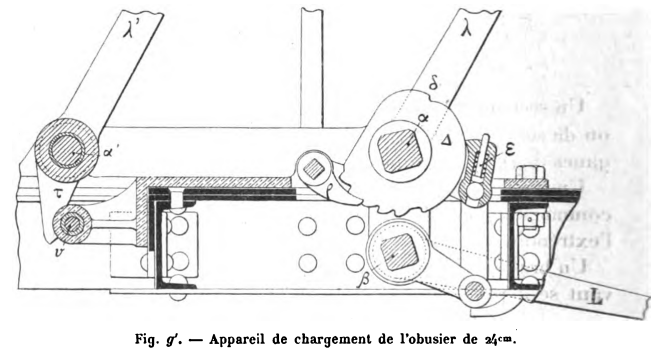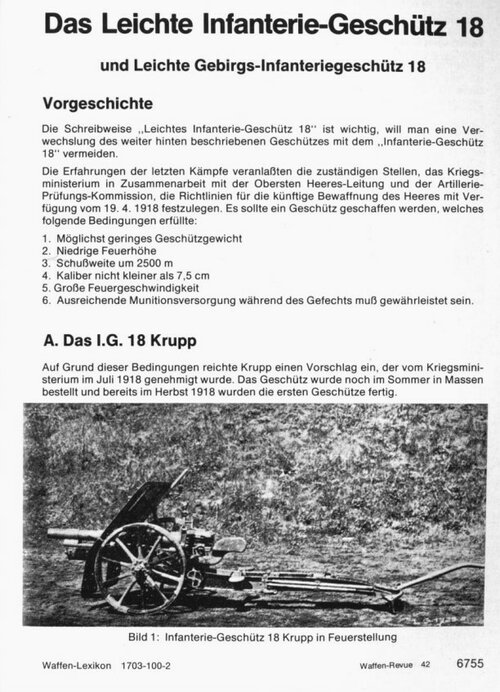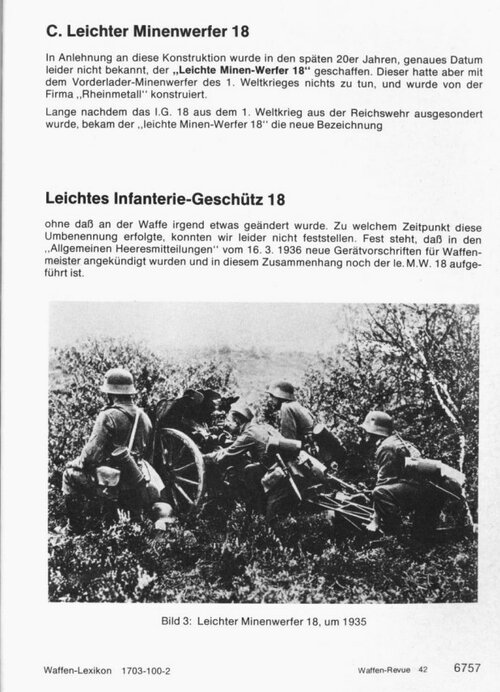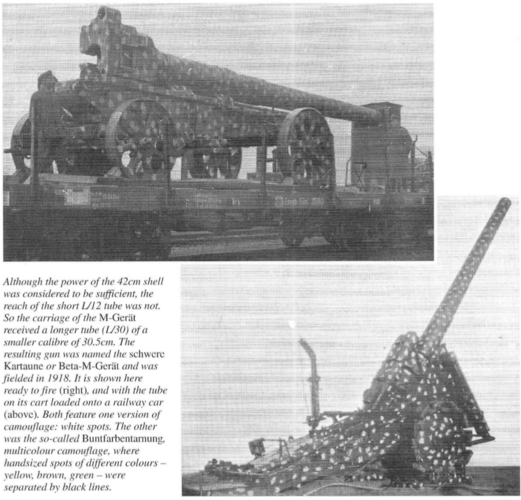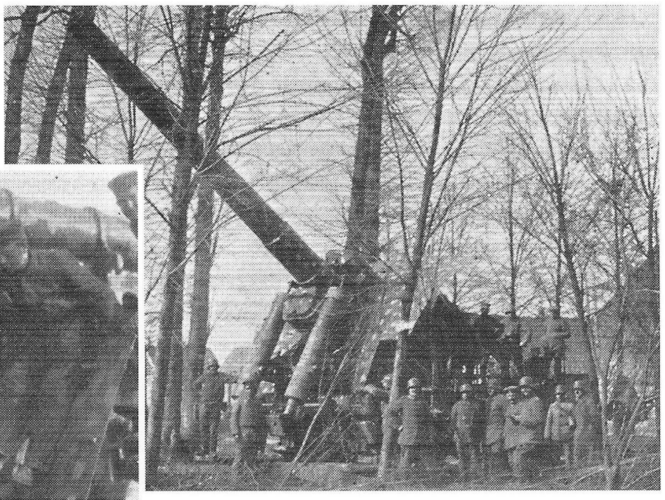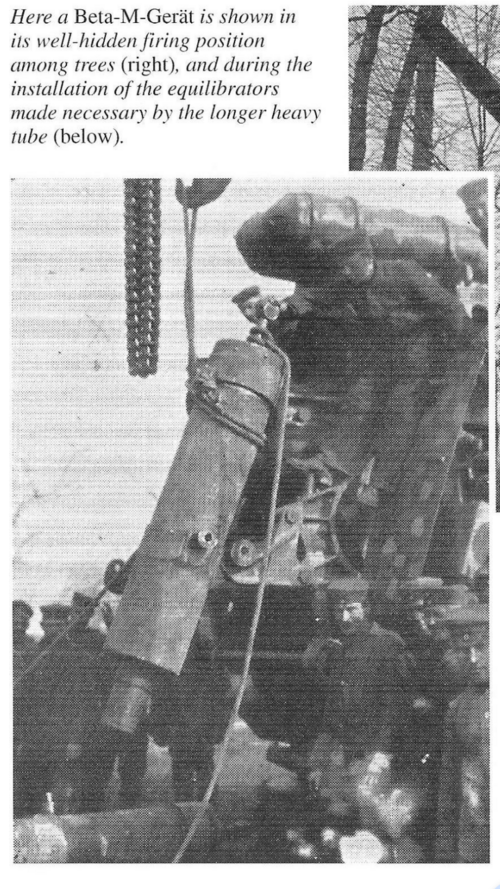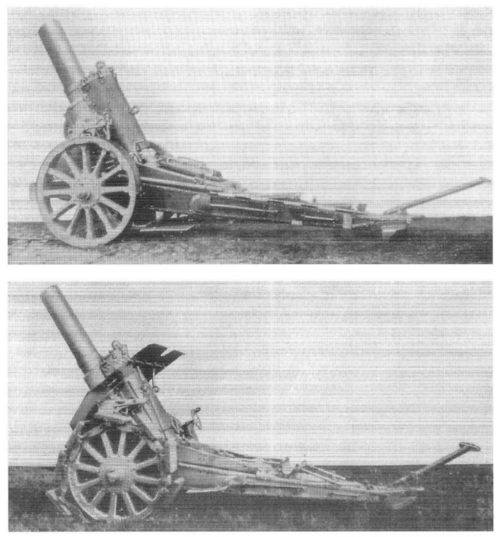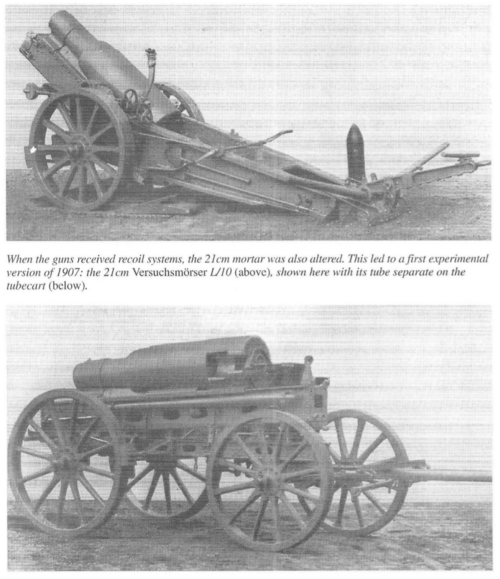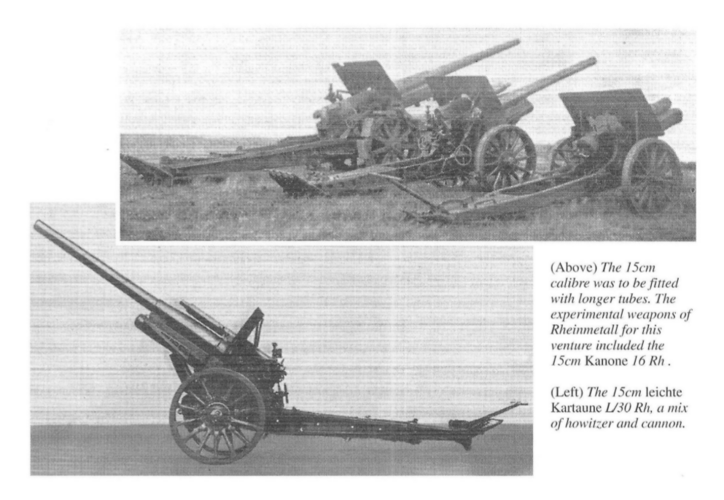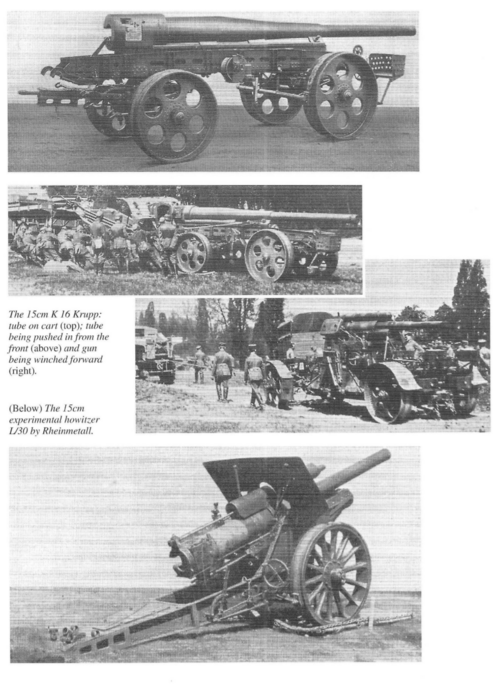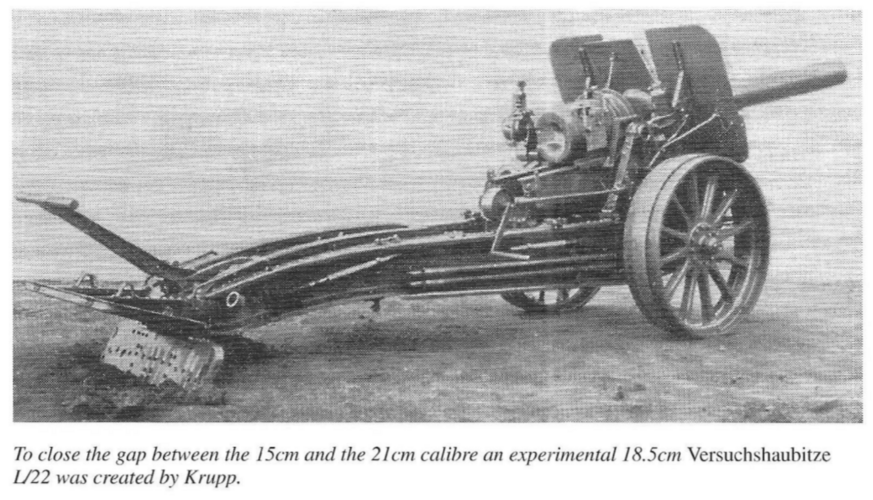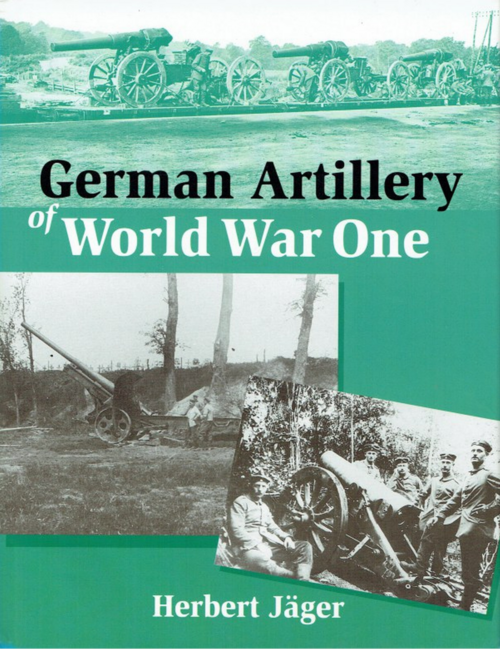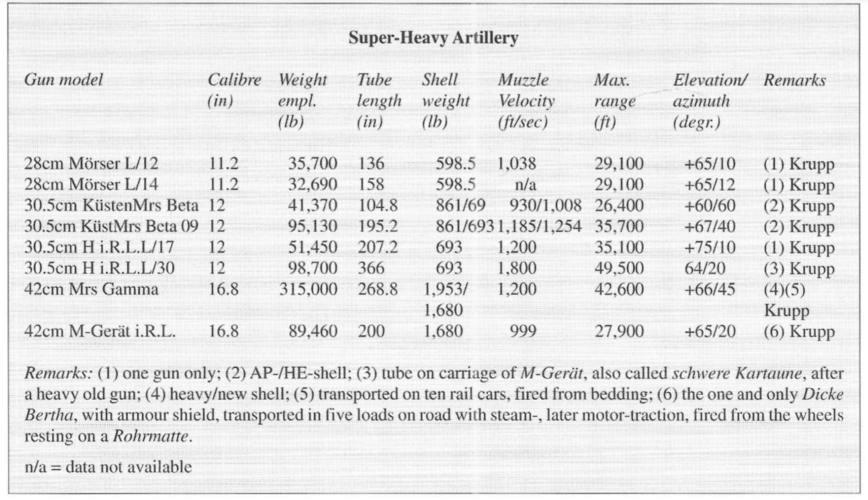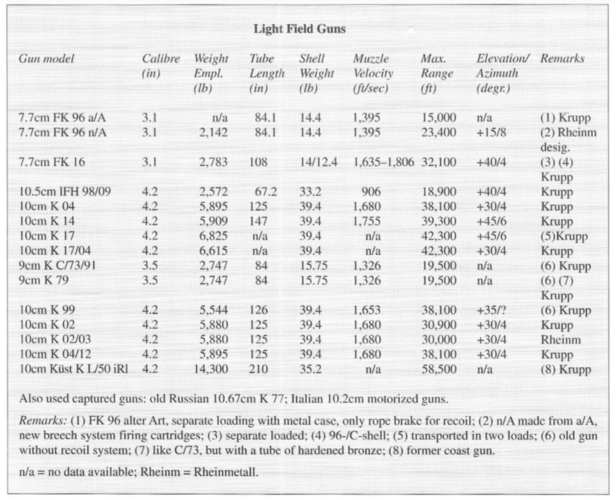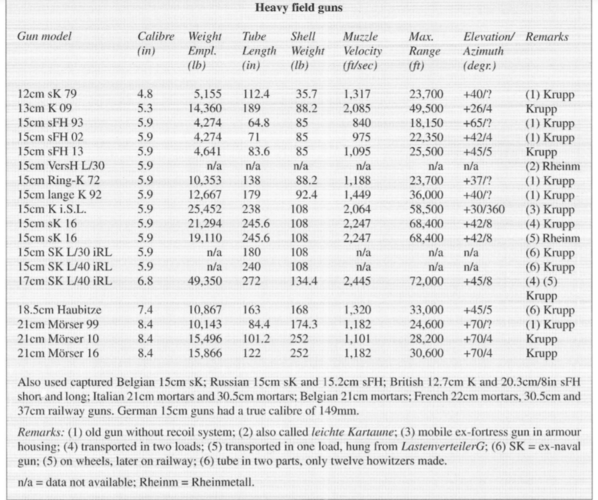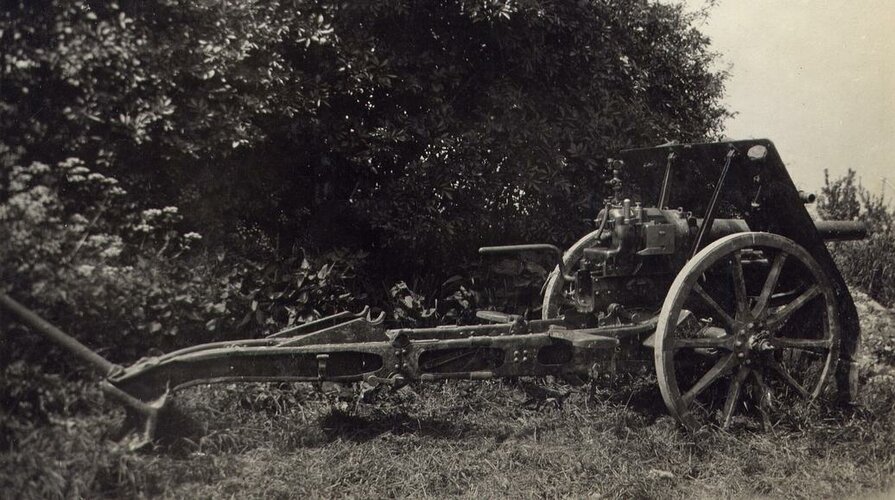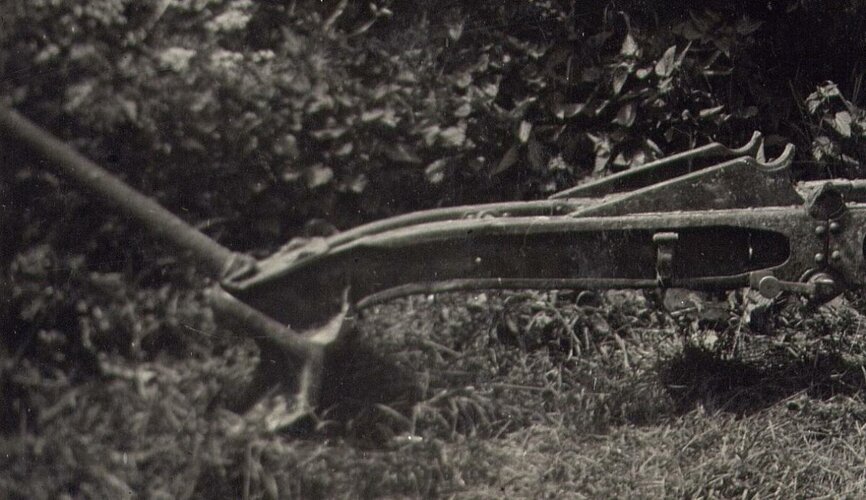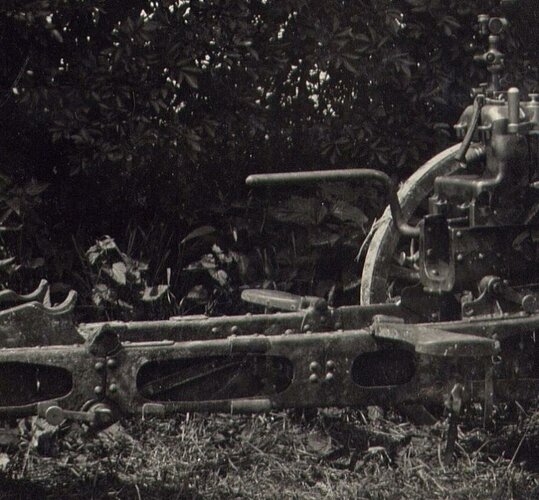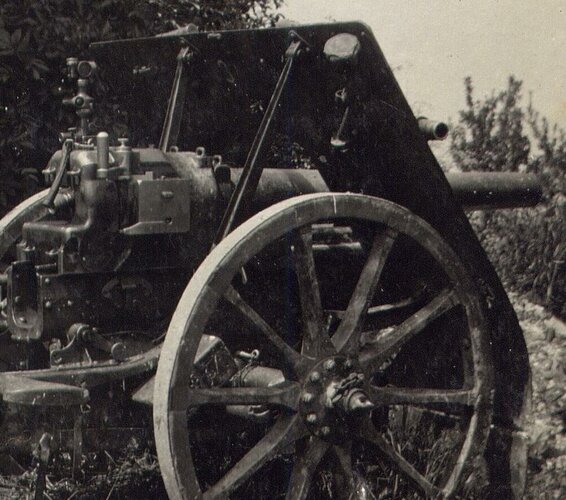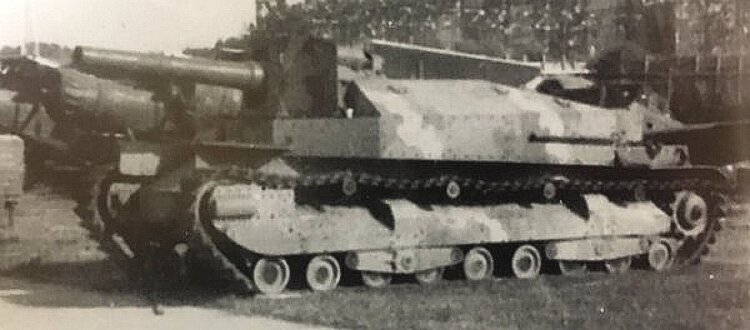Bottleship
ACCESS: Secret
- Joined
- 30 June 2019
- Messages
- 493
- Reaction score
- 1,261
Germany:
- 3,7cm TAK gun:

 tanks-encyclopedia.com
- 28cm Krupp haubitze L/14 i.R., 1912-1913
tanks-encyclopedia.com
- 28cm Krupp haubitze L/14 i.R., 1912-1913

 en.wikipedia.org
- 28cm Erhardt haubitze L/12, 1912-1913
en.wikipedia.org
- 28cm Erhardt haubitze L/12, 1912-1913
- 9cm Rheinmetall kanonenhaubitze L/31, 1917-1918:

Explosives 1,095 kg, range - HE 9900 m, 8700 m shrapnel and 11200 m chemical
- 8,8cm Krupp Z.A. field gun, 1917-1918:

- 7,7cm infanteriegeschutz 18 ("father" of LeIG 18)
- 10,5cm L/45 Flak project for navy
- Also, 1918 recoiless anti-tank gun - no data
- Krupp 30,5cm morser
Austria-Hungary
50cm mortar ("Storek"?) prototype

 www.vhu.cz
www.vhu.cz

- 83,5 mm field gun, 10 kg projectile, 12 km range
Italia
Small-known 400 mm mortar:




270 kg bomb, 105 kg explosives, 6 rounds per hour, 4 km range, weight 11,6 ton
Russia
Infantry artillery:
- Universal cannon-mortar, 1915 project
- 45 mm infantry guns
Light and heavy field artillery:
- Modernization of many guns, new carriage for 3-inch M1902 gun with tears and suspension (mount speed no less 45 kmph), L40 or L45 barrel, new long-range projectiles, upgrade elevation and traverse, new carriage for 6-inch M1910 cannon
- New light 3-inch gun with L50 barrel, increased propellant charge, new long-range projectiles, 15 km range
- 92-95 mm field gun - 1916-1917 project
Siege artillery:
- 8" L/13 M1913 howitzer:

 ru.wikipedia.org
In addition to the Putilov plant, which was supposed to fulfill an order for 32 howitzers, they were to be produced at the Perm and Obukhov artillery plants.
ru.wikipedia.org
In addition to the Putilov plant, which was supposed to fulfill an order for 32 howitzers, they were to be produced at the Perm and Obukhov artillery plants.
- 8" M1913 short cannon (more powerful than 8" howitzer) - barrel and breech weight 270 pood (4423 kg) (8" M1913 howitzer barrel and breech weight 130 pood / 2129 kg), I would guess that the muzzle velocity of a 6-pood (98.28 kg) projectile would be 1500 f/s (457 m/s).
- 9" Schneider howitzer for Russian army:

 en.wikipedia.org
- 11" L/24 gun - "father" of 12" L/20 M1915 howitzer
en.wikipedia.org
- 11" L/24 gun - "father" of 12" L/20 M1915 howitzer
- 9" long-range gun on base of 12" M1915 howitzer - production was ordered by the Obukhov plant.
- 9" 450-pood (7371 kg barrel) gun on 11" 400-pood howitzer base, 163.8 kg projectile, 17 km range
- 11" 400-pood (6552 kg barrel) howitzer - experimental, ~1912, 8 km range
- 12" L/20 M1915 howitzer (despite the fact that they were issued 44 pieces during the First World War and despite the fact that in the USSR they were the main siege weapons, for some reason they are rather little known)

 en.wikipedia.org
The Obukhov plant produced 33 pieces in 1916 and was supposed to produce 36 more in 1917, after installing new equipment, it was required to produce another 300 pieces within about a year, in addition, the production of these howitzers was to begin in Tsaritsyn at a new artillery factory.
en.wikipedia.org
The Obukhov plant produced 33 pieces in 1916 and was supposed to produce 36 more in 1917, after installing new equipment, it was required to produce another 300 pieces within about a year, in addition, the production of these howitzers was to begin in Tsaritsyn at a new artillery factory.
- 14" howitzer - project, ~1912-1913
- 16" L/13 howitzer - 1913-1917, four howitzers not ended in 1917 on Obukhov plant and utilized in 1920s, three types of projectiles - steel, iron and light steel, 696.2, 696.2 and 532.4 kg weight, 145.5, 45 and 100.3 kg explosives, muzzle velocity of 696.2-kg shells 381 mps, 10.7-13.3 km range. The Obukhov plant was supposed to be able to manufacture two such howitzers per month, in addition, these howitzers were supposed to be produced by the artillery plant in Tsaritsyn.
- 16" L/20 howitzer - 1913-1917, one howitzer was built in France by Schneider, 870.2 kg projectile, 110.6 kg propellant, 500 mps, range 16 km, but, in tests used other projectile with 20 km range, barrel weight 29.5 ton, 2 inch shield.
Anti-aircraft artillery
There was a proposal to create 4.2-inch anti-aircraft guns for the army based on the 4.2-inch M1910 gun. For the navy, a 4-inch gun L / 36.5 was developed. In 1914, the Putilov Plant developed a project for an anti-aircraft installation for a 6-inch naval gun. The Obukhov plant was supposed to produce 37-mm and 40-mm "Pom-Pom", also, a project was developed for a 1-inch automatic gun based on the Maxim gun.
- 1" AA Maxim gun
- 2.5" AA gun, 1916:
 www.navweaps.com
- 4" L/36.5 naval AA gun project, 1917
www.navweaps.com
- 4" L/36.5 naval AA gun project, 1917
- 6" AA gun mount, 1914 Putilov plant project
Other projects:
- Experimental 90 mm mortar with special chamber to increase the efficiency of the combustion of gunpowder, based on GR mortar, 1916
- Railgun project, 300 mm, 15 m barrel, 10 000 hp engine, 1 round per 17 minutes, 1000 kg projectile, 3000 mps, 1915, The Obukhov plant refused to manufacture the gun, as it was loaded with other orders.
Some pre-WW1 projects and experimental guns:
- 4.2 inch light howitzers, lighter than 4.8 inch


- Obukhov plant 4.8 inch howitzer, 1905


- Putilov plant 4.8 inch howitzer, ~1905

M1904 artillery triplex
To replace the old siege guns - 4.2-inch, 6-inch and 8-inch short, 4.8-inch and 6-inch guns and an 8-inch howitzer were developed, with recoil system, based on 120 mm L/45 gun recoil syste., the barrel weight was 200 pood (3276 kg), from production of the 4.8-inch 200-pood gun and 8-inch howitzer was abandoned, only the 6-inch M1904 gun was made, without recoil system.
France
- Filloux 17 mm anti-tank gun, 1918:

- Delaunay-Beleville 20 mm automatic gun:
- 1917 experimental "turbo-cannon", due to the gradual flow of powder gases into the barrel through the jet nozzle, the pressure in the barrel almost does not increase, in theory this would make the gun barrel lighter, and the projectile could be less durable and contain more explosives
- 1916 railgun project, based on pre-war experiments
Britain
- 4 inch Maxim AA gun project, ~1917-1918
- 6 inch AA gun project, ~1917-1918
Does anyone have any information on developments in France and Britain during World War I that would have led to the 85mm Schneider gun and the 25-pounder gun? Or, these developments began after the war?
Also, I heard that during the Russo-Japanese War, the Russians developed several projects of mortars, of which the mortar based on the barrel of the 47 mm Hotchkiss gun is the most famous.
By 1914, as far as I know, only Germany had light trench artillery, in other countries there was nothing like the German 170-mm mortars, is anything known about the developments in this area in other countries? Russian historian Alexander Shirokorad mentions the development in Russia of several types of light mortars ranging in caliber from 3.4 to 6 inches.
It is very difficult to find information about Goddard, Ryabushinsky recoiless guns and about German anti-tank recoilless guns / grenade launchers.
- 3,7cm TAK gun:

3.7 cm Tankabwehrkanone Rheinmetall - Tank Encyclopedia
The 3.7 cm Tankabwehrkanone was the first ever anti-tank cannon, developed in Germany during World War I to defeat the new British tanks.
 tanks-encyclopedia.com
tanks-encyclopedia.com

28 cm Haubitze L/14 i.R. - Wikipedia
- 9cm Rheinmetall kanonenhaubitze L/31, 1917-1918:
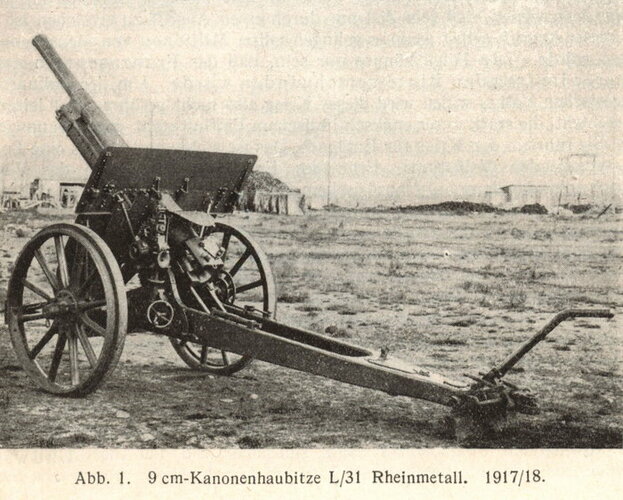
Explosives 1,095 kg, range - HE 9900 m, 8700 m shrapnel and 11200 m chemical
- 8,8cm Krupp Z.A. field gun, 1917-1918:
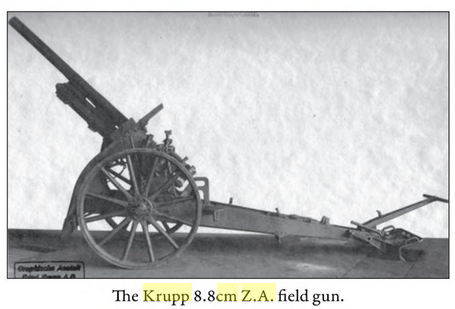
- 7,7cm infanteriegeschutz 18 ("father" of LeIG 18)
- 10,5cm L/45 Flak project for navy
- Also, 1918 recoiless anti-tank gun - no data
- Krupp 30,5cm morser
Austria-Hungary
50cm mortar ("Storek"?) prototype

Zákopové dělostřelectvo za první světové války. 2. část
Přinášíme vám druhou část textu, který se věnuje vývoji zákopového dělostřelectva v období první světové války. Jádrem tohoto článku je historie a rozvoj minometu jako typické zbraně, která ve válečném dění let 1914-1918 sehrála významnou úlohu. Autorem textu je Jan Fedosejev, kurátor sbírky...
 www.vhu.cz
www.vhu.cz
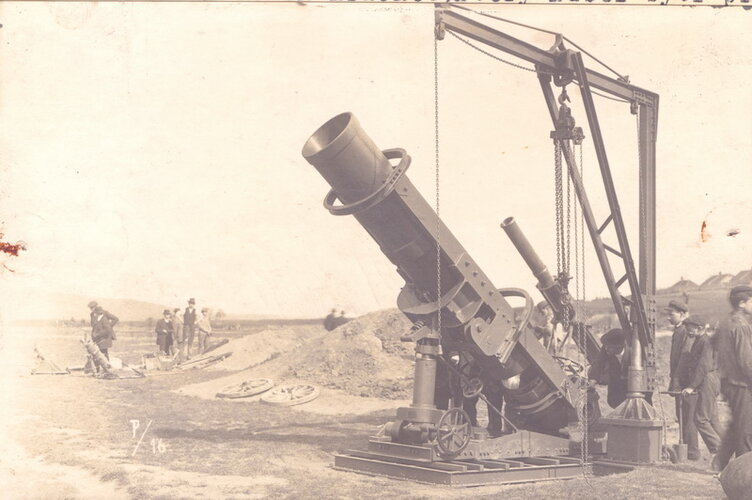
- 83,5 mm field gun, 10 kg projectile, 12 km range
Italia
Small-known 400 mm mortar:
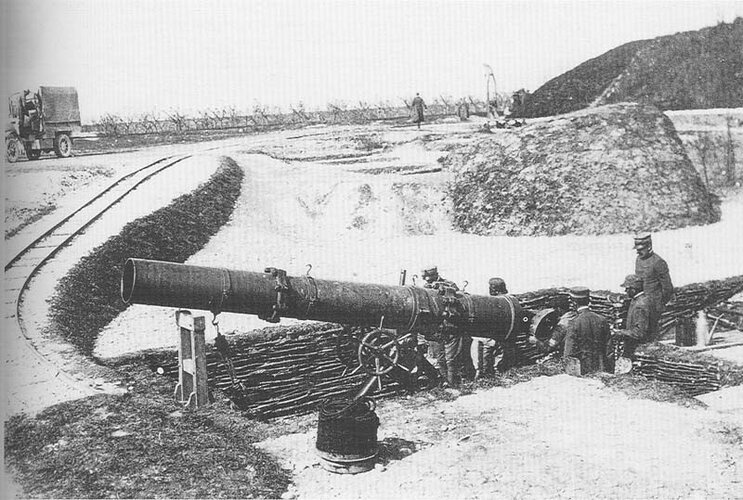
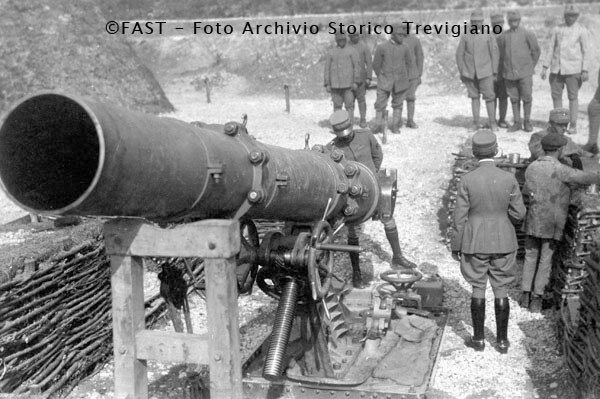
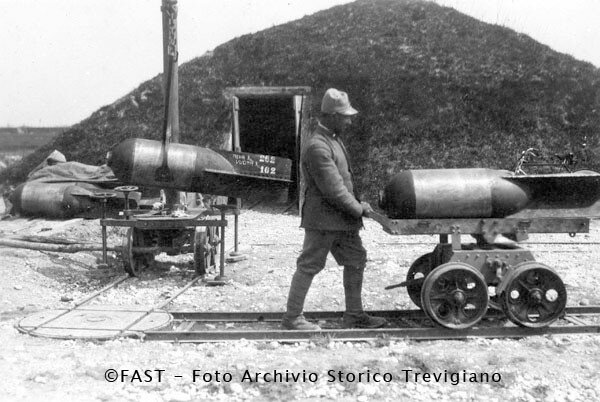

270 kg bomb, 105 kg explosives, 6 rounds per hour, 4 km range, weight 11,6 ton
Russia
Infantry artillery:
- Universal cannon-mortar, 1915 project
- 45 mm infantry guns
Light and heavy field artillery:
- Modernization of many guns, new carriage for 3-inch M1902 gun with tears and suspension (mount speed no less 45 kmph), L40 or L45 barrel, new long-range projectiles, upgrade elevation and traverse, new carriage for 6-inch M1910 cannon
- New light 3-inch gun with L50 barrel, increased propellant charge, new long-range projectiles, 15 km range
- 92-95 mm field gun - 1916-1917 project
Siege artillery:
- 8" L/13 M1913 howitzer:

203-мм гаубица образца 1913 года — Википедия
- 8" M1913 short cannon (more powerful than 8" howitzer) - barrel and breech weight 270 pood (4423 kg) (8" M1913 howitzer barrel and breech weight 130 pood / 2129 kg), I would guess that the muzzle velocity of a 6-pood (98.28 kg) projectile would be 1500 f/s (457 m/s).
- 9" Schneider howitzer for Russian army:

220 mm TR mle 1915/1916 - Wikipedia
- 9" long-range gun on base of 12" M1915 howitzer - production was ordered by the Obukhov plant.
- 9" 450-pood (7371 kg barrel) gun on 11" 400-pood howitzer base, 163.8 kg projectile, 17 km range
- 11" 400-pood (6552 kg barrel) howitzer - experimental, ~1912, 8 km range
- 12" L/20 M1915 howitzer (despite the fact that they were issued 44 pieces during the First World War and despite the fact that in the USSR they were the main siege weapons, for some reason they are rather little known)
305 mm howitzer M1915 - Wikipedia
- 14" howitzer - project, ~1912-1913
- 16" L/13 howitzer - 1913-1917, four howitzers not ended in 1917 on Obukhov plant and utilized in 1920s, three types of projectiles - steel, iron and light steel, 696.2, 696.2 and 532.4 kg weight, 145.5, 45 and 100.3 kg explosives, muzzle velocity of 696.2-kg shells 381 mps, 10.7-13.3 km range. The Obukhov plant was supposed to be able to manufacture two such howitzers per month, in addition, these howitzers were supposed to be produced by the artillery plant in Tsaritsyn.
- 16" L/20 howitzer - 1913-1917, one howitzer was built in France by Schneider, 870.2 kg projectile, 110.6 kg propellant, 500 mps, range 16 km, but, in tests used other projectile with 20 km range, barrel weight 29.5 ton, 2 inch shield.
Anti-aircraft artillery
There was a proposal to create 4.2-inch anti-aircraft guns for the army based on the 4.2-inch M1910 gun. For the navy, a 4-inch gun L / 36.5 was developed. In 1914, the Putilov Plant developed a project for an anti-aircraft installation for a 6-inch naval gun. The Obukhov plant was supposed to produce 37-mm and 40-mm "Pom-Pom", also, a project was developed for a 1-inch automatic gun based on the Maxim gun.
- 1" AA Maxim gun
- 2.5" AA gun, 1916:
Russia / USSR 2.5"/38 (6.33 cm) Pattern 1916 - NavWeaps
- 6" AA gun mount, 1914 Putilov plant project
Other projects:
- Experimental 90 mm mortar with special chamber to increase the efficiency of the combustion of gunpowder, based on GR mortar, 1916
- Railgun project, 300 mm, 15 m barrel, 10 000 hp engine, 1 round per 17 minutes, 1000 kg projectile, 3000 mps, 1915, The Obukhov plant refused to manufacture the gun, as it was loaded with other orders.
Some pre-WW1 projects and experimental guns:
- 4.2 inch light howitzers, lighter than 4.8 inch
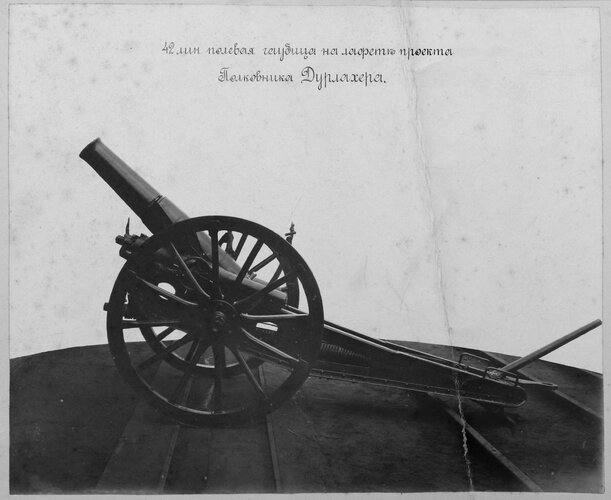
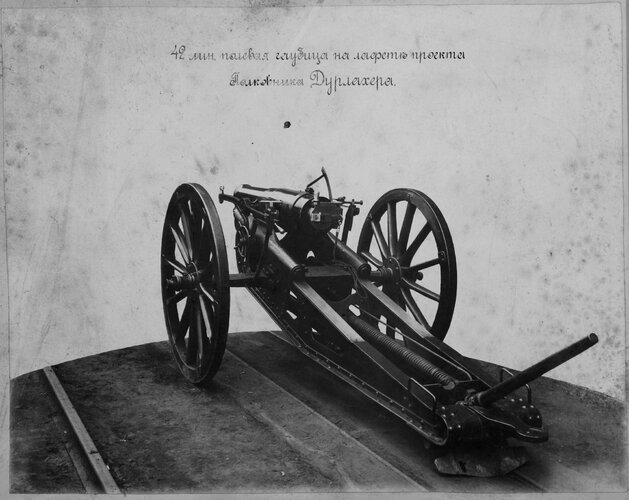
- Obukhov plant 4.8 inch howitzer, 1905
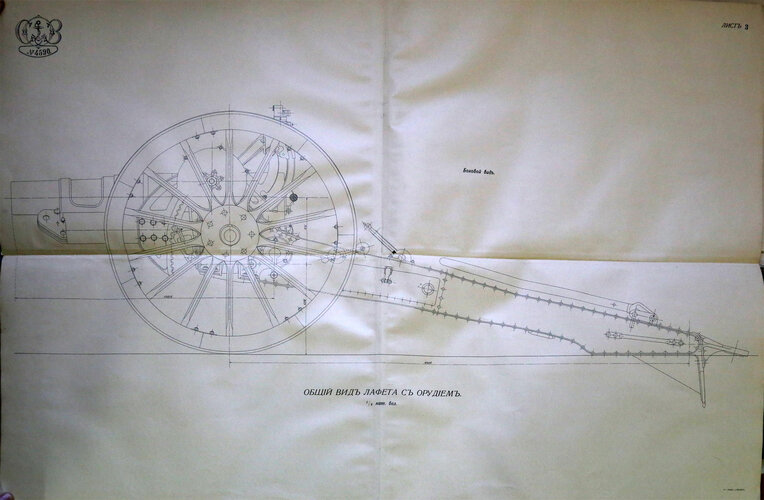
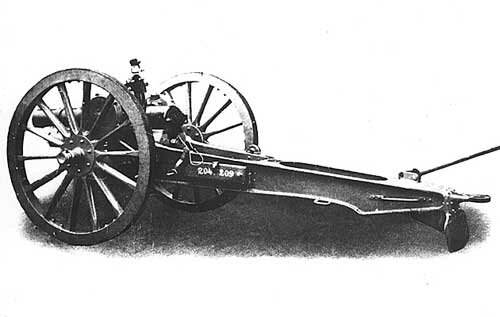
- Putilov plant 4.8 inch howitzer, ~1905
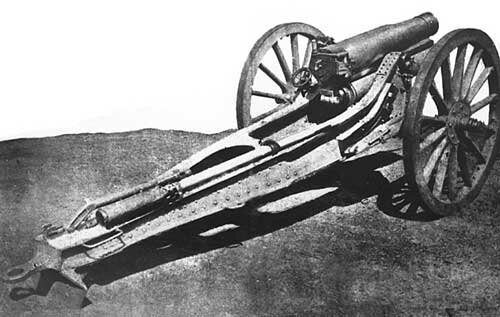
M1904 artillery triplex
To replace the old siege guns - 4.2-inch, 6-inch and 8-inch short, 4.8-inch and 6-inch guns and an 8-inch howitzer were developed, with recoil system, based on 120 mm L/45 gun recoil syste., the barrel weight was 200 pood (3276 kg), from production of the 4.8-inch 200-pood gun and 8-inch howitzer was abandoned, only the 6-inch M1904 gun was made, without recoil system.
France
- Filloux 17 mm anti-tank gun, 1918:
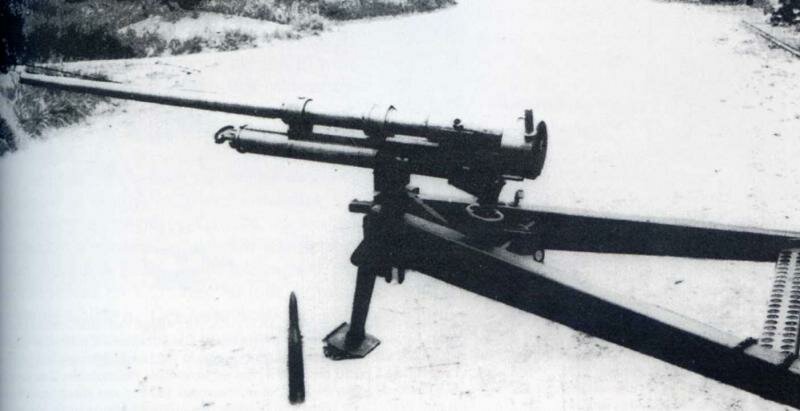
- Delaunay-Beleville 20 mm automatic gun:
- 1917 experimental "turbo-cannon", due to the gradual flow of powder gases into the barrel through the jet nozzle, the pressure in the barrel almost does not increase, in theory this would make the gun barrel lighter, and the projectile could be less durable and contain more explosives
- 1916 railgun project, based on pre-war experiments
Britain
- 4 inch Maxim AA gun project, ~1917-1918
- 6 inch AA gun project, ~1917-1918
Does anyone have any information on developments in France and Britain during World War I that would have led to the 85mm Schneider gun and the 25-pounder gun? Or, these developments began after the war?
Also, I heard that during the Russo-Japanese War, the Russians developed several projects of mortars, of which the mortar based on the barrel of the 47 mm Hotchkiss gun is the most famous.
By 1914, as far as I know, only Germany had light trench artillery, in other countries there was nothing like the German 170-mm mortars, is anything known about the developments in this area in other countries? Russian historian Alexander Shirokorad mentions the development in Russia of several types of light mortars ranging in caliber from 3.4 to 6 inches.
It is very difficult to find information about Goddard, Ryabushinsky recoiless guns and about German anti-tank recoilless guns / grenade launchers.
Last edited:

